
Jon writes that often, it's sparsely-tied flies which work best.
In between tying flies, I invest some quality time reading the latest celebrity picture magazines. In amongst other zesty pics – including my favourite genre, the ‘before and after’ shots (including speculation on work done to stave off the natural ageing process) – there were some recent photos of the great man, Justin Bieber. Justin was recently photographed leaving his wife’s business launch with… you guessed it, his wife. I know it’s borderline inconceivable that you don’t know his wife’s name, but just in case you don’t (and shame upon you) it’s Hailey Bieber nee Baldwin. Hailey wore a figure-hugging and arguably too-short red dress, coupled with seemingly unwearable, but very likeable, high heels – and just the right amount of makeup. In summary, she was superbly and appropriately decked out for a big event. And then there was Justin….
Justin evidently didn’t see the need to go to too much effort outfit-wise. Runners and tracksuit pants, with the best bit being sunglasses worn inside the building and at night, along with a baseball cap. If that wasn’t enough, JB decided he needed to wear a hoodie, and with the hood portion neatly dragged over the top of the baseball cap. Wowee!
So, there you have it: an important, pivotal event for his wife, and he’s clearly decided to attend underdressed. Which got me thinking… Might Justin Bieber be a good fly-tier? Stay with me here.
It shocks me to acknowledge it, but I’ve been flyfishing and tying flies for over forty years. And one of the things I’ve slowly learnt during those four decades, is that lightly or sparsely dressed flies, often work a heck of a lot better than the overdressed equivalents. This happens so regularly, yet is not often talked about.
Let me give you some examples…
Christmas Island flies have traditionally been sparse ties. Why? Maybe it’s because in the early days, the local fly-tiers possibly would have had difficulty sourcing materials for flies. So, when I first went to Christmas Island in 2006, I concluded that the local ties were ridiculously sparse so the tier could minimise consumption of tying materials. Wrong! Many subsequent trips to Christmas Island have proved to me, time and time again, that underdressed flies, rather than overdressed, work better. Even flies which have gradually lost some wing materials due to encountering multiple bonefish, still prove very effective.
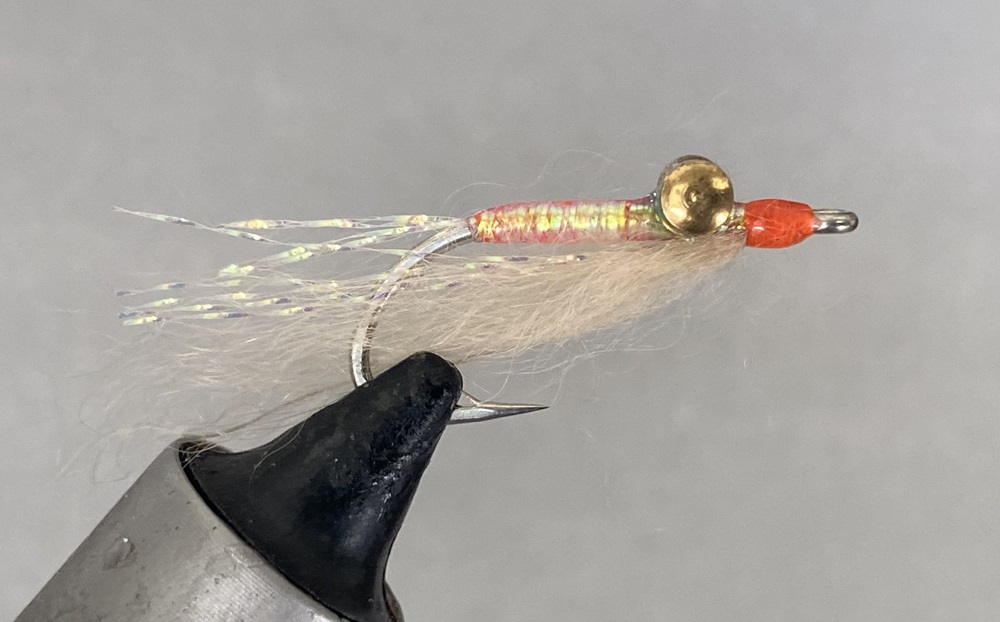
Another case in point, is evident on the trout lakes I happen to be part owner of, in Victoria’s Central Highlands (which in turn share many characteristics with nearby public waters like Wendouree, Moorabool, Newlyn etc.). A significant portion of the food the trout here graze upon, is small and slim. The midge hatches, which occur most of the year, are defined by extremely delicate insects. So delicate and petite in fact, that you sometimes wonder why on earth the trout bother eating them. Dry fly options for these midge hatches include the Griffith’s Gnat, which is simply a small grizzly hackle wound around the shank of a small hook. We think this fly represents balling midges. (The other cool thing about the Griffiths Gnat, is if you say Griffiths Gnat quickly ten times, you end up saying Grifisnat, which isn’t even a word…)
Where was I? Ah yes, the other dry fly option is a small size 16 or 18 dry with a thin black body and a small black parachute hackle. The key in all these examples, is not too much fluff! Or you can opt for the midge pupa option – also known as buzzers. These ‘buzzer’ flies are, once again, ridiculously simple and slim – but very effective.
Lake mayfly dries
Meanwhile, the local mayfly duns and mayfly spinners are both beautifully-formed examples of natural fragility. So, when I tie a paradun for Editor Philip, such are his rigorous demands, they are tied with slim bodies and not too many hackle wraps. And they work when other bulkier flies (or ‘buggier’ to human eyes at least) do not.
Paradun
Thread - Waxed Black
Hook - Size 12-16 Tiemco TMC100B
Tail - Brown cock hackle fibres
Body - Brown possum dubbing
Thorax - Brown possum dubbing
Rib - Black Uni-Flex
Post - Natural CDC
Hackle - Brown saddle hackle
Notes:
1.Wax the thread, particularly when you’re applying dubbing.
2.I use CDC for the post – it’s water resistant, compact and lightweight. You can also use polypropylene yarn – not as light nor as compact, but it is completely water resistant.
3.Just prior to wrapping the parachute hackle, apply a tiny amount of supa glue (or similar cyanoacrylic acid ester-based product) to the base of the post where it meets the hackle. Not too many wraps of hackle!
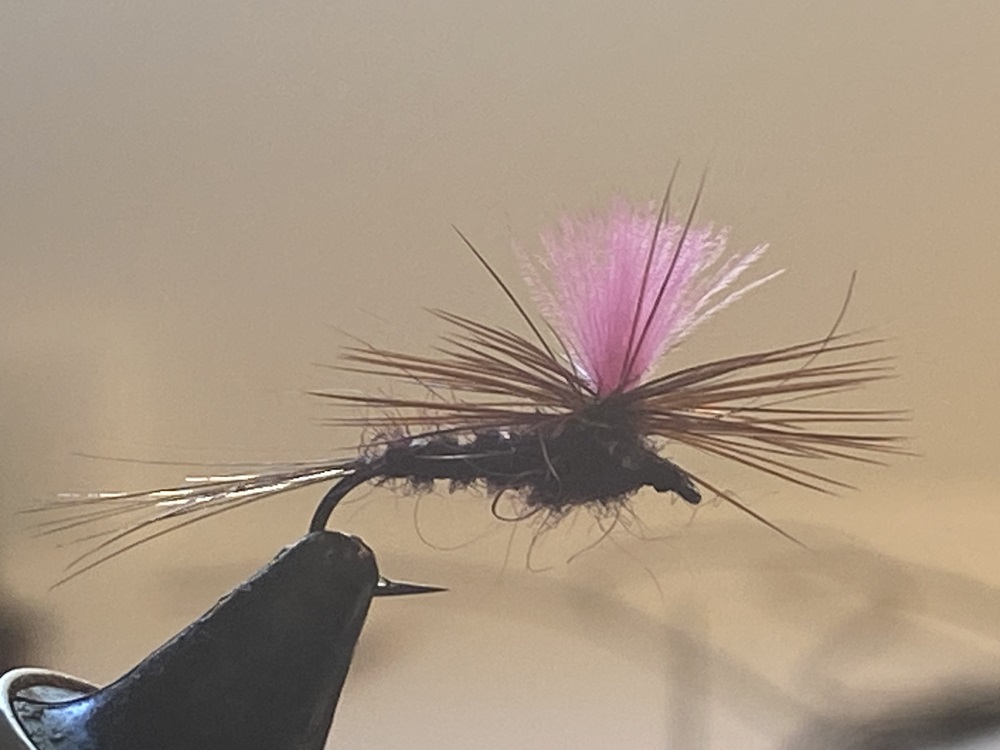
Thoughts on lake mayfly nymphs
According to Justin Bieber, lake mayfly nymphs are the same when it comes to effective sparseness. Don’t pack on tonnes of dubbing in the misguided hope that the trout will have more chance of seeing your fly. Trout have no trouble finding the natural, svelte nymphs in the water, so they’re certainly capable of seeing your realistically thin artificial. It doesn’t need, nor want to be, unrealistically fat.
Skinny Milly Mayfly Nymph
Thread - Black
Hook - Size 12 or 14 Tiemco TMC3761
Tail - Brown cock hackle fibres
Body - Absorbent dark brown dubbing (rabbit fur or possum do nicely).
Thorax - Same absorbent dark brown dubbing.
Rib - Brown copper wire.
Wing-case - Clear 2mm wide latex, coloured with permanent black marker.
Super Skinny Milly Mayfly Nymph
Thread - Black
Hook - Size 12 or 14 Tiemco TMC3761
Tail - Brown cock hackle fibres
Body - Peacock quill
Thorax - Absorbent dark brown dubbing
Rib - Brown copper wire
Wing-case - Clear 2mm wide latex with permanent black marker.
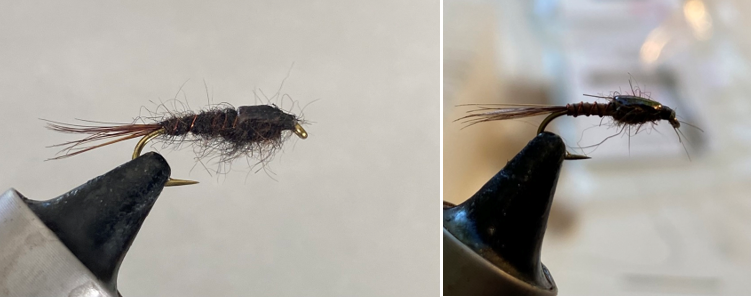
Other wet flies
And while we’re on the topic of small wet flies, stick caddis and, in particular, damselfly nymphs, are all fragile, slim and dainty. People often fall into the trap of over-dressing damsel nymphs and for the life of me I don’t understand why. I consistently and successfully use Stuart Tripney’s Deadly Damsel Nymph – it’s bloody perfect and frighteningly slim. (I find the best way to tie these particular damsel nymphs is to buy them!)
Some of the lakes are populated with small baitfish of various species. Brown and rainbow trout cruise in a leisurely manner along the edges in search of a good baitfish feed. It’s fascinating to watch these solid feeding fish suddenly accelerate and launch into a school of delicious baitfish. It’s a violent and determined show of force which excites all who witness it. Over the years, once again, it’s a slim and diminutive wet fly that hoodwinks the hungry trout. A fly that my friend Andrew ‘Wet’ Connell introduced me to, ‘Wet’s Zonker’: ridiculously simple to tie, and dangerously effective to use. A perfect example of Bieber-esque underdressing. (Very similar to Craig Coltman’s ever so slightly jazzed up version, the Gambusia Effective Flies – The Gambusia - FlyStream)
Even the ubiquitous Clouser can benefit from the sparse approach. The original Clouser Deep Minnow – developed by Bob Clouser – has deer hair tied above and below the hook shank. There is a case to be made that this is not always necessary. Victorian fly-tier, Chris Beech, introduced me to his slimmer and simpler Clousers. They work a treat. Sink fast. Look sleek like a baitfish should. And are incredibly durable – which is handy when out amongst the toothy saltwater types. In short, they are a durable, simple-to-tie fly that catches fish. Just like Bieber, these flies tick all the boxes.
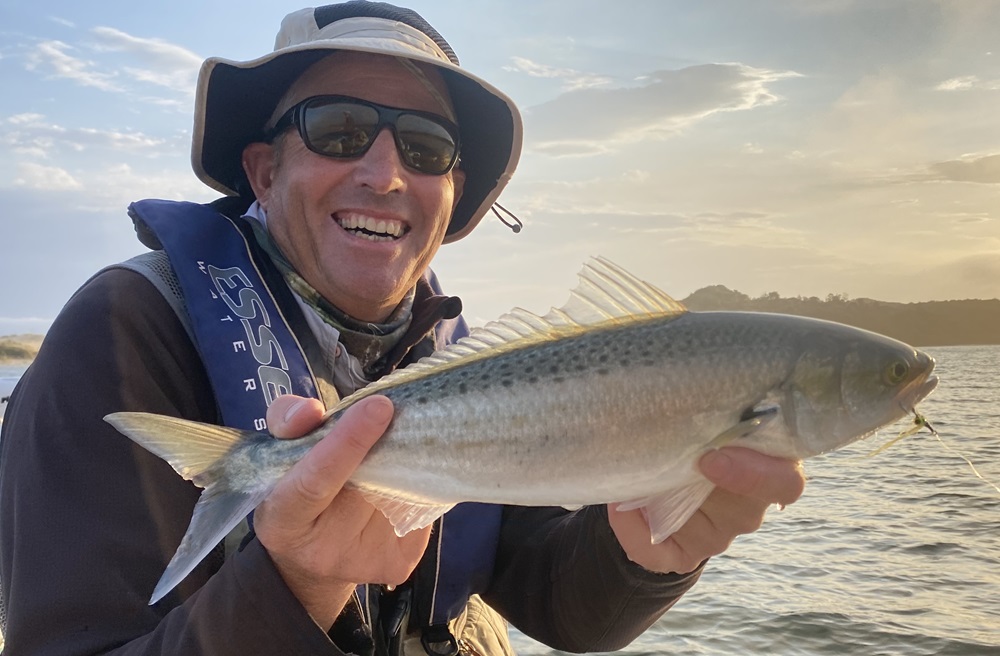
Now it should be said that sometimes, buggy, bulked-up flies are the order of the day. When chasing trout feeding on mudeyes, grasshoppers and beetles for example, it is desirable to incorporate a bit of body and bulk in an imitation. Barramundi often loiter around in muddy water, so a bulky, big profile fly might indeed be needed to get their attention. Royal Wulffs and Stimulators are great searching patterns on fastwater trout streams – and both are decidedly overdressed.
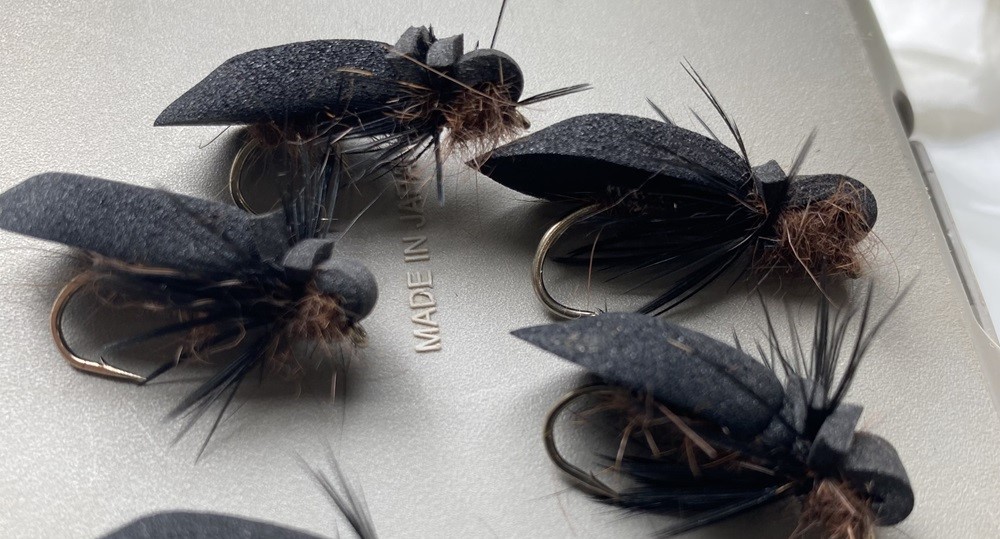
By the way, my next article may be titled, ‘Why does a trout always take your dry fly the second you stop looking at it?’ I’ve just got back from a few days in Tasmania, and I can offer some fascinating insights into this topic. Unfortunately.
FLYSTREAM FACTS – SOME GENERAL FLY-TYING ADVICE
Some fly-tying tips if I may. I believe there are a few non-negotiables:
- Use good hooks. There is nothing worse than spending much time and effort chasing your target fish, only to have the hook break or open up on the strike – or mid-fight. This happens too often in my view. Not only do your hooks need to be strong, but they need to be the correct ‘shape’ for the fly you’re tying. So, source good hooks.
- The fly you’re tying needs to be functional. Wet flies need to sink. Dry flies need to float. Obvious I know, but there is little point, for example, in tying a beautiful dry fly with materials that readily absorb water.
- The fly you’ve tied should be durable enough to catch multiple fish, i.e. it shouldn’t fall apart. Use strong tying thread. Make sure you tie off the head of the fly securely, and add head cement if you can. Even consider judicious use of supa glue where and when required.
- Get your proportions correct. As but one example, when tying the ubiquitous paradun pattern, the post, body and tail should, by & large, each be the same length.
- Be like Justin B - don’t overdress!











